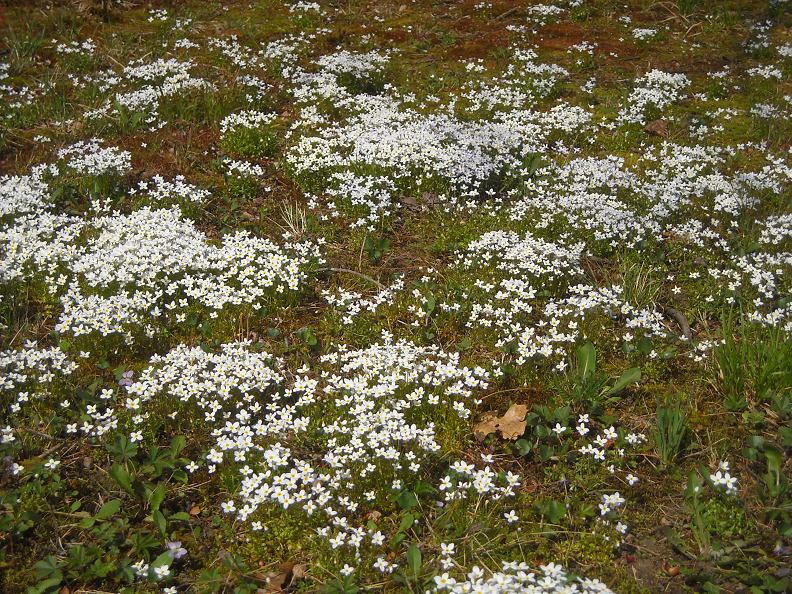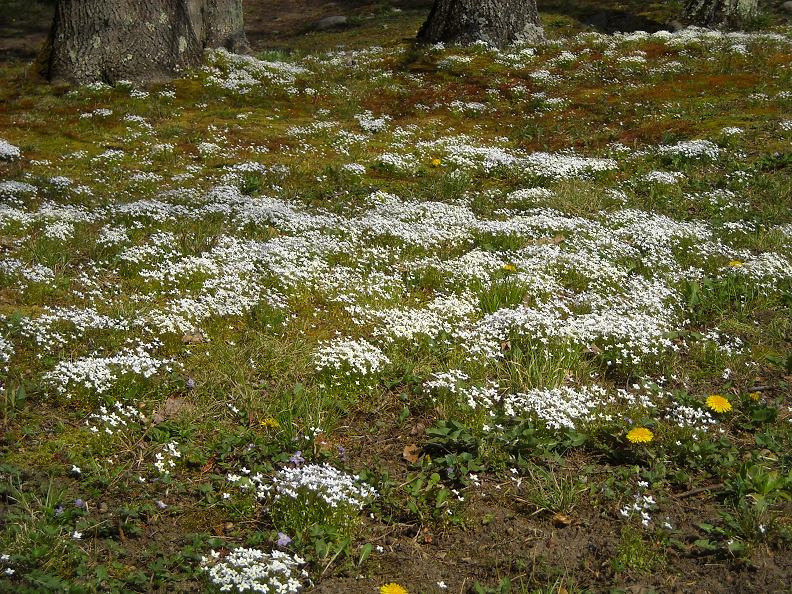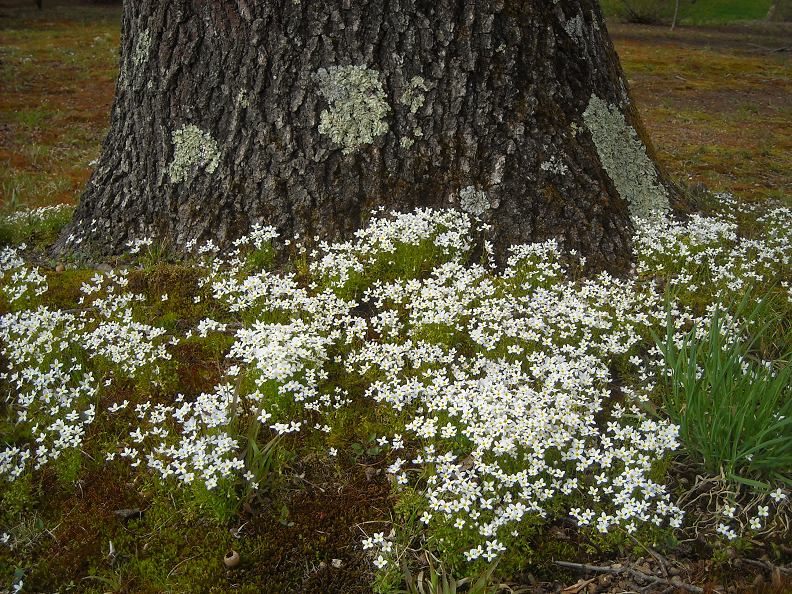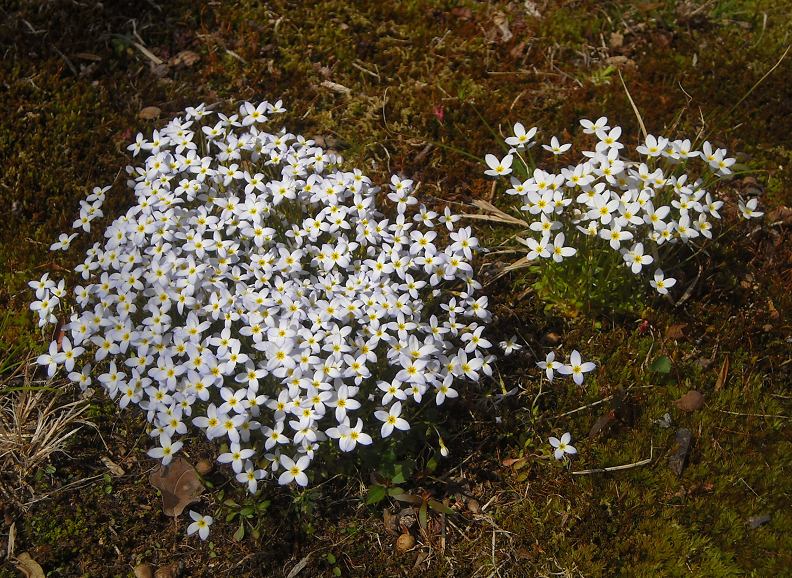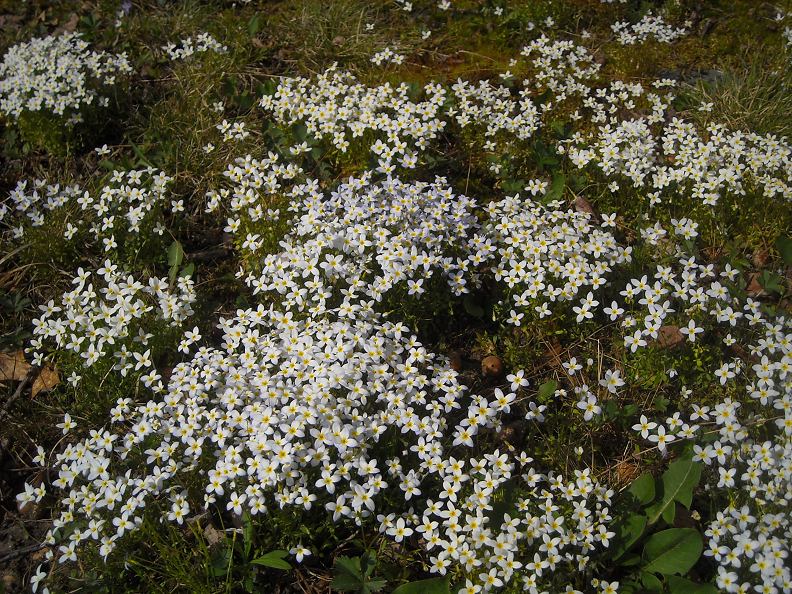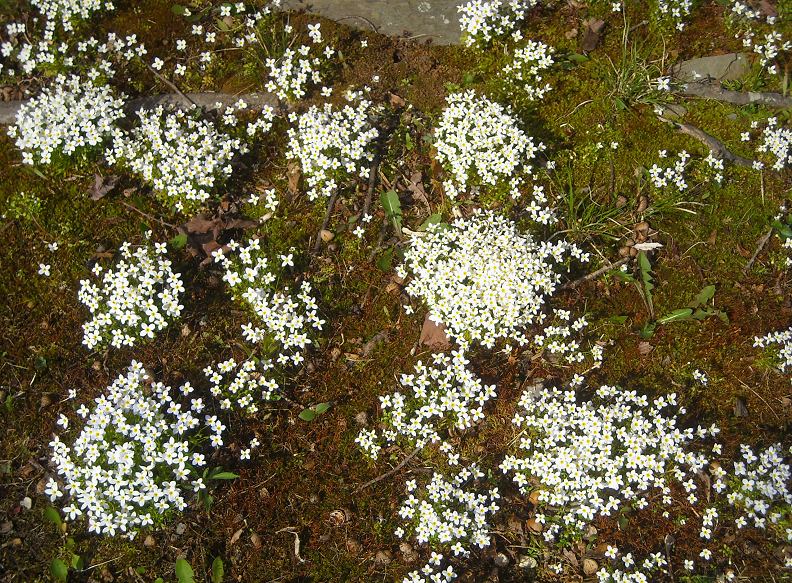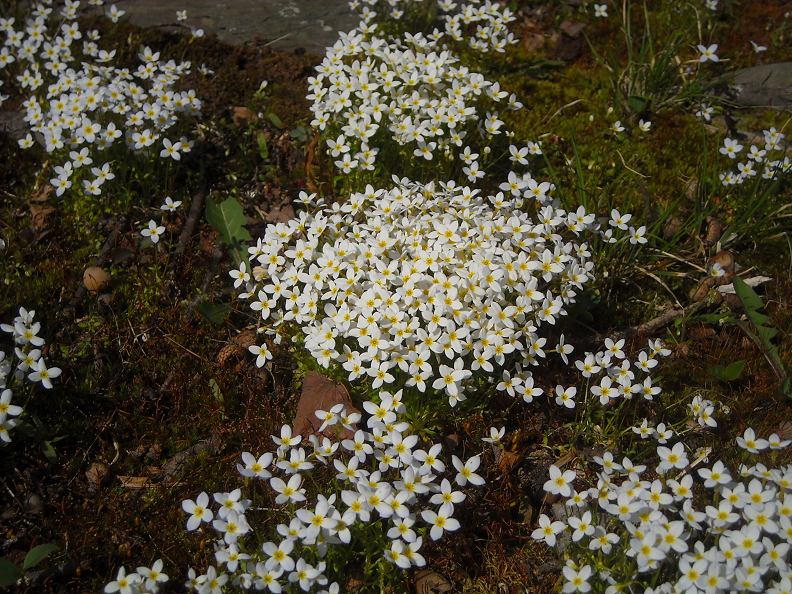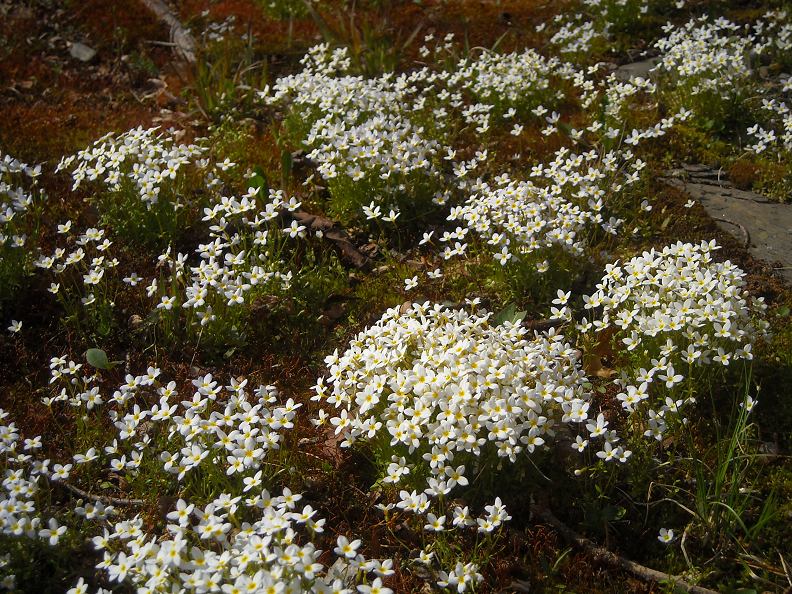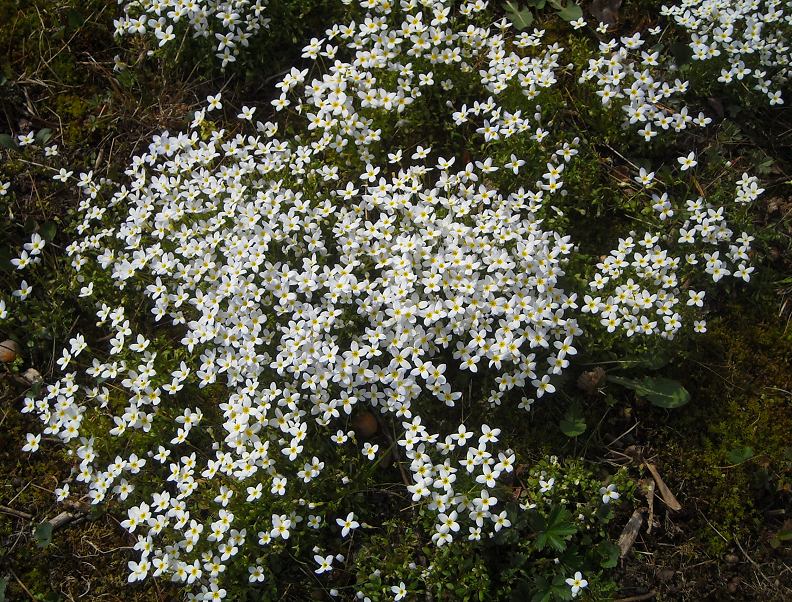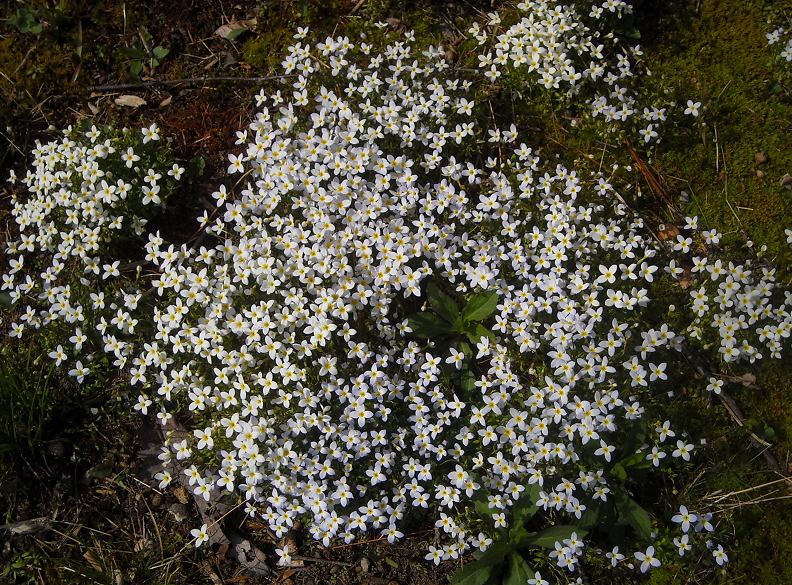This message is a photographic essay on one of my favorite plants, Houstonia caerulea (Hedyotis caerulea), common name Bluets, a member of the Rubiaceae.
While H. caerulea is not generally thought of as an alpine plant, it does grow up into the mountains, and depending on whether one considers H. caerulea var. faxonorum valid or not, the genus does get up into alpine zones in the White Mts of New Hampshire. There are choice mountain species in Western USA as well. At any rate, H. caerulea is such a tiny bun-forming plant and blooming for such a long period, that it certainly warrants a place in the rock garden.
Ubiquitous in Eastern USA and here in Massachusetts (Northeastern USA), it is extremely variable, always charming, yet perhaps because it is so common, the plant is largely underappreciated. Nor has the great range of variability been explored, documented, and enacted upon. Typically seen growing on sunny to partially shaded highway embankments in areas with poor soil that support only sparse grass and mosses, it is a familiar sight in its most insignificant manifestation, a mere wisp of a plant making filmy sprays of tiny white or faintly bluish flowers.
But I have seen specimens that dazzle the eye and spark the imagination, a rock gardener's dream to be sure. Typically such spectacular plants, as I have spotted them, are growing in moist locations in neighborhood lawns amongst lush, deep green spring grass, where trespasser's shall not venture, but the eye strains for glimpses of 6" round domed mounds of pristine white, as if imitating Aretian Androsace, at least from afar, but merely growing in someone's lawn! The prospect so close, yet unreachable. I imagine knocking on someone's door with what would surely seem a bizarre and suspect request to gain access to these magnificent domes of white, for a petite snippet, when they are mere "weeds" in someone's un-mown spring lawn.
Occasionally serendipity happens. On an unusually hot Sunday afternoon late April 2009, I ran a local 10k road race in Groton, Massachusetts. After the race, I walked back to a large business where runners were allowed to park. I crossed the multi-acre lawn in front of the business, approaching a partly sunny hollow at the edge of a grove of mature trees, and there before me was a fantastic colony of Houstonia caerulea. These were in a somewhat drier site without the luxuriant hemispherical domes mentioned previously, but nonetheless an exciting colony of variable Bluets.
Let me share some photos exploring the diversity of this colony. Most were pure white, but some light blues were present too. In western Massachusetts, I have seen some very deep blue forms indeed, but none of such color were to be found here, however the range of flower size, impressive floriferousness ratio on some plants, and forms with tight foliage masses, more than compensated. What this colony revealed to me was, the superior forms with extraordinary flower count were not necessarily a factor of soil and moisture, but were indeed genetically separate individual plants where one could select superior forms. I hope to have some of these growing in my lawn soon!

